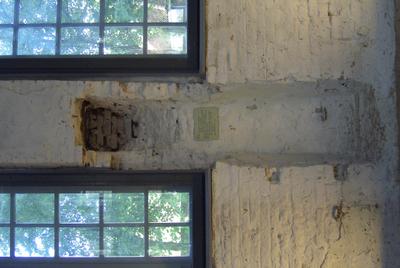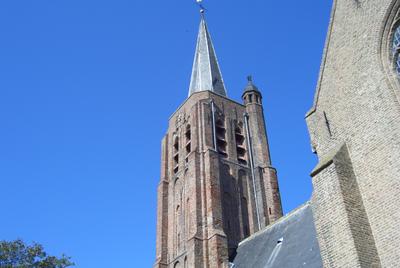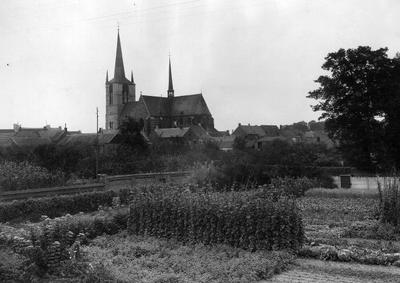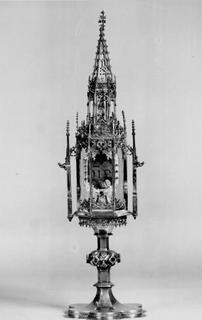
[Try as I might, I can't get these images to load vertically; just tilt your head to the left.]
The Church in Veere is monstrous large, much larger than one would think that the small Zeeland village would need. The exterior of the church, as well as its late medieval tower, are still in relatively good repair, while the interior has been stripped and has undergone numerous transformations. Like most churches in Zeeland, this one was the object of iconoclasm: in 1572, it was dismantled, the religious sculptures stripped away, and the wall paintings whitewashed.

This image, for example, shows one of the side chapels along the north aisle. Until 1572 it was dedicated to St. Christopher, and the niche, now empty, most likely had a sculpture representing the saint. The altar was sponsored by the guild of masons and woodworkers. The leatherworkers and shoemakers also sponsored a chapel along the western aisle, theirs dedicated to St. Crispin. The oldest guild, that of the fishermen, had a chapel dedicated to St. James.
The church fell into desuetude for two centuries, and in 1812 the French forces annexed it as a military hospital. It continued to be used as a hospital for most of the nineteenth century. In 1833, during a cholera epidemic, for example, the church became a refuge for those suffering cholera. The side chapels were turned into rooms for the sick, each housing 7 people.

You can see in this picture that the nave was divided into a three-storey complex, and the windows were added to correspond to this new partitioning.

The west façade similarly reveals this nineteenth-century adjustment, with the original archway over the entrance dismantled to made way for the new three-level plan.

The most recent adjustment to the interior reveals a much different approach to health: the nave has now become a concert hall.

The view from the top of the tower reveals why the fishers’ guild was so powerful in Veere.



